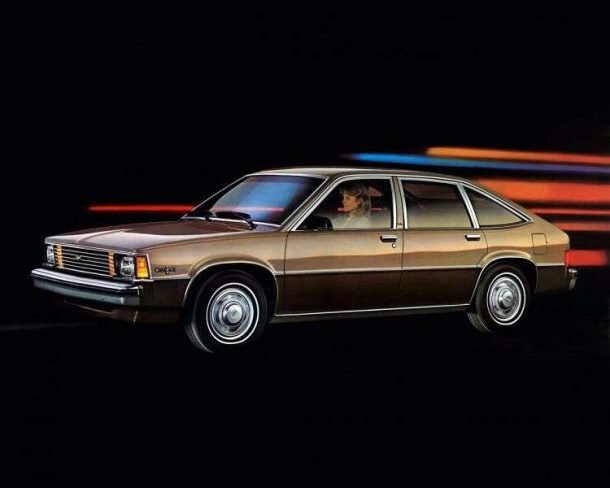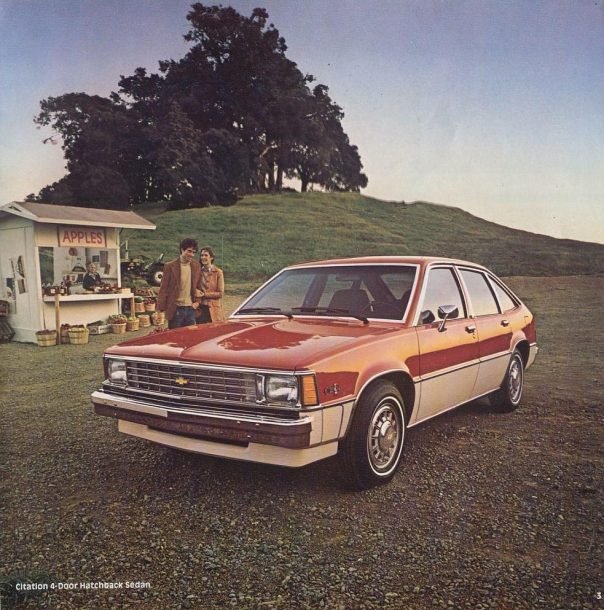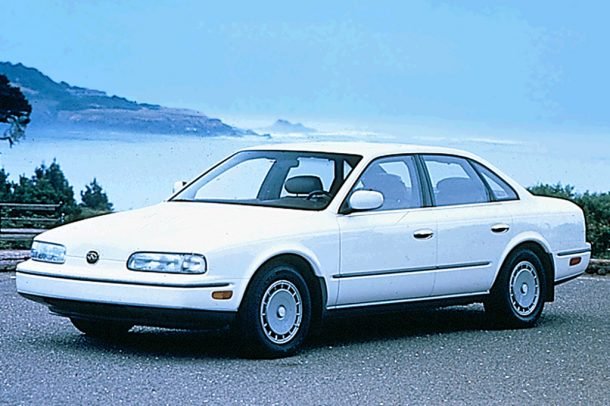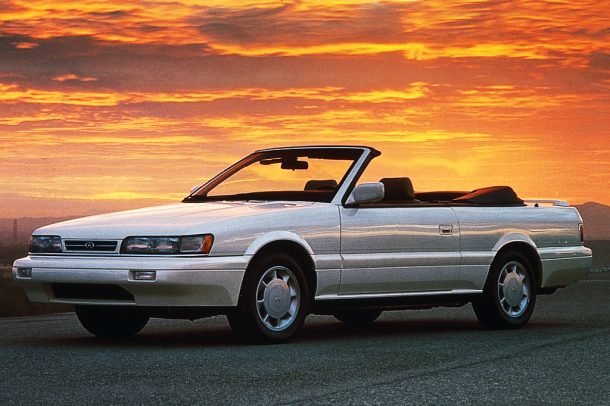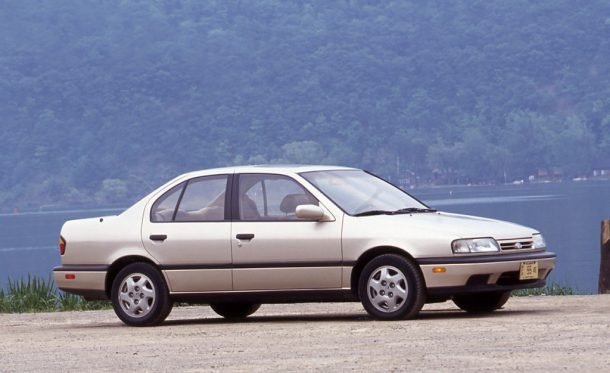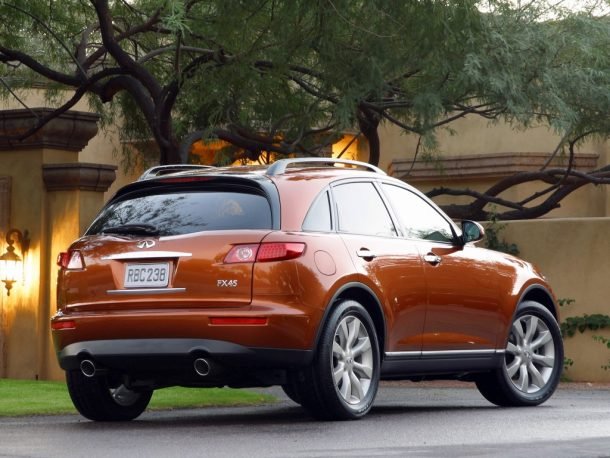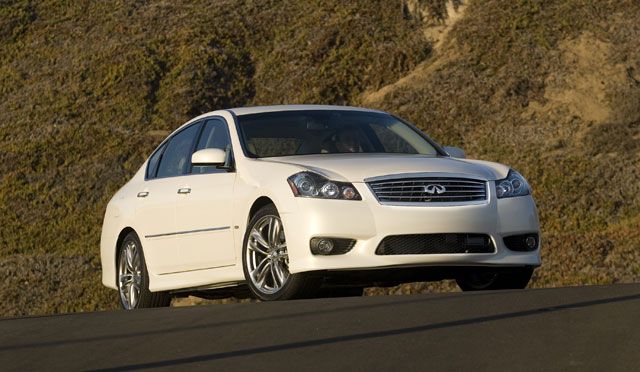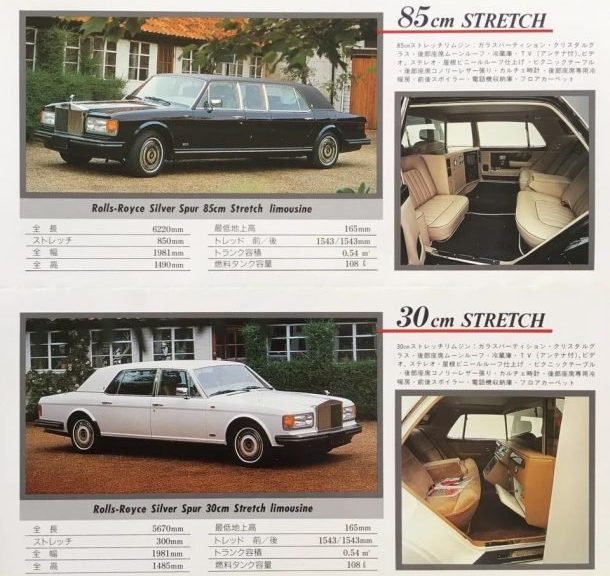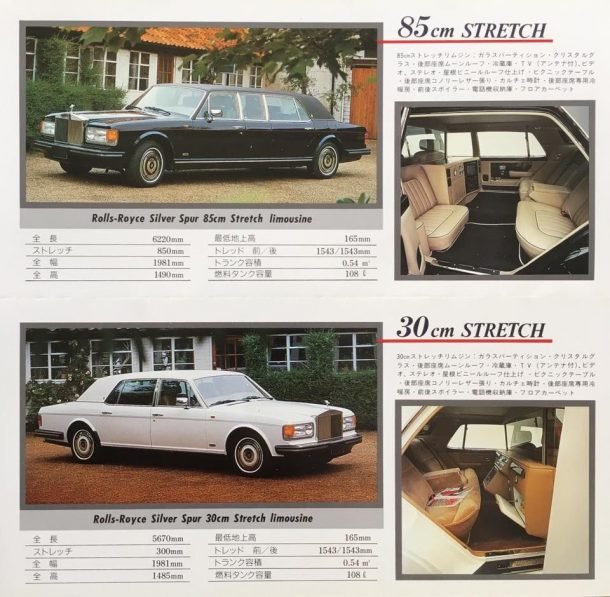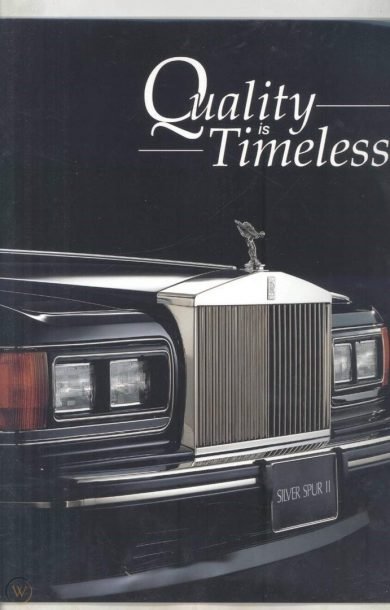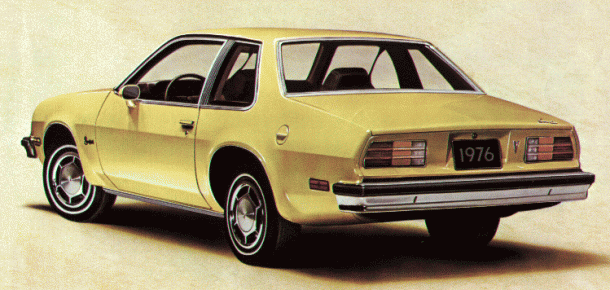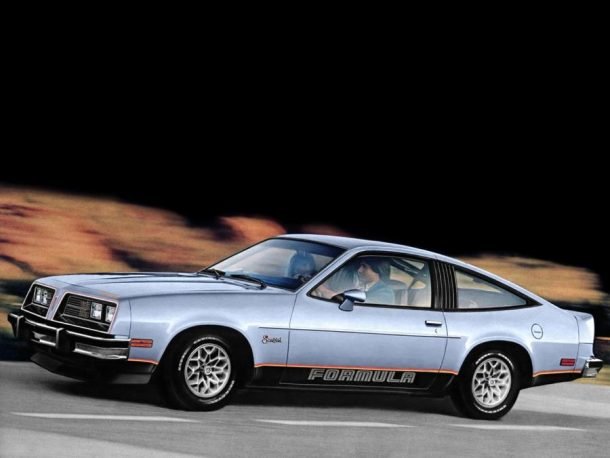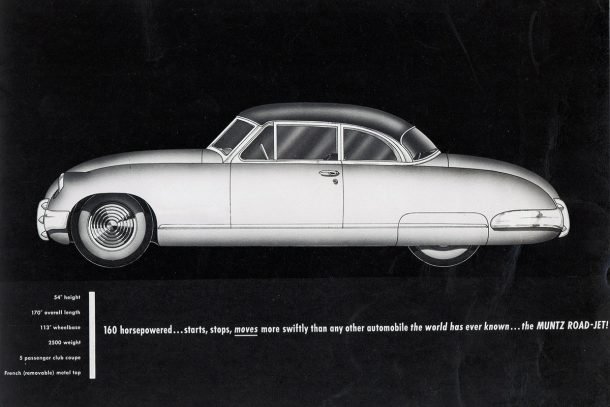
The current $7,500 Federal electric vehicle tax incentive could get a boost to $12,500 if the “Clean Energy for America” bill ever makes its way to reality – but it’s absolutely the wrong way to go, in my opinion. And, I know – “Who cares what Jo thinks about EV incentives,” right? Right –except that very, very few people in the industry have as much “green cred” as I do, so maybe you’ll want to give this one a read.
WHAT QUALIFIES AS GREEN CRED
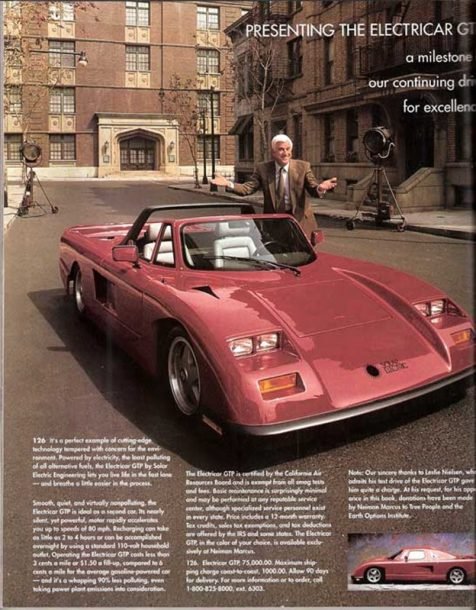
You’re not hallucinating. That is, indeed, Leslie Nielsen unironically (and, hilariously) hawking a Warren Mosler-built Consulier GTP convertible in the pages of the Neiman Marcus catalog. And, yes, it does indeed say “Solar Electric” on the … I guess that’s the hood? Let’s go with hood.
This ad is relevant because, a long, long time ago, I was lucky enough to work for Warren and beyond lucky enough to actually drive some of these fantastic cars – including one of the early US Electricar GTPs. This was the 90s, and these guys were talking about how the battery tech was too far away to make the cars practical, but also talking about things like range-extending generators to keep power flowing on longer trips while taking advantage of electric motors’ low-end torque … all stuff that’s familiar now, almost 30 years later, but seemed like the stuff of fantasy to me, back then.
A few years later –and just a few miles up the road from the old Mosler Auto Care Center – I was at RENNtech, building one of the first hybrid show cars for Mercedes-Benz that would, eventually, go on to win a couple of awards at SEMA.
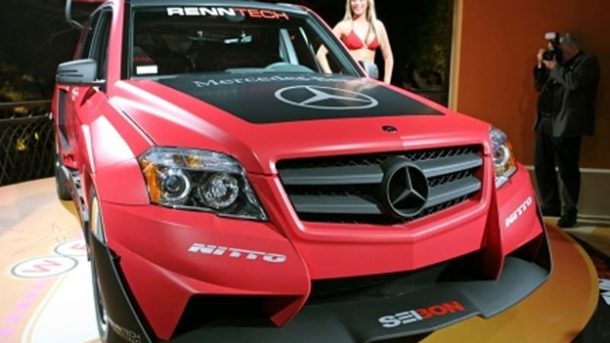
It was around that time that I met a guy named Nick Chambers, who asked a whole lot of questions about how the RENNtech-built hybrid powertrain worked before eventually telling me, “You actually explain this quite well, do you want to just write the article? I’ll publish it under your name.”
That was in 2008, and I started writing for Nick’s blog, first. Then another one. Then a few more, all while building and racing cars running CNG and ethanol. I was tuning on alternative fuels because, well – I didn’t really believe that electric cars were going to “win” the future. I thought biofuels had a real chance, especially biodiesel, right up until they didn’t.
These days, my 9-5 involves training car dealers to sell EVs by helping to develop tools that explain “electric fuel” in a way that’s easy to understand and simple enough to communicate without the need for engineering jargon and memorization.
So, green cred = nearly 30 years playing with EVs, hybrids, and alt-fuel cars that absolutely did not suck. There’s no climate change denial here, no lack of familiarity with the concepts of the space, and I am very deeply invested in the success of electric vehicles in the marketplace.
Why do I, a consummate green-car guy, think these huge incentives to promote EV sales are a bad idea? I’m glad you asked!
THESE TAX CREDITS ARE DUBIOUSLY POLITICAL
Matt Posky outlined the proposed $12,500 tax credit very nicely in his own article on the matter and summed up his take nicely with the use of a burning pile of money as the featured image. But there’s a passage in his article that I think is worth repeating here.
“While the $7,500 tax credit persists, the bill now adds special exemptions depending on how the vehicle is manufactured,” explains Posky. “For example, the government will tack on another $2,500 if final assembly takes place inside the United States and another $2,500 if the factory in question happens to be represented by a union.” (Emphasis mine.)
This is one of those perfect examples of concerning political language that just about everyone – regardless of whether you identify with the Republicans or Democrats – can take issue with. Huzzah!
On the one hand, that “final assembly” language is incredibly sketch. Does it include vehicles like the Ford Transit Connect, which are fully built in Turkey, then shipped to the US and partially disassembled in order to skirt the Chicken Tax? If you’re a free-market/Right to Work critic, you might argue that this language actually does very little to ensure that the legislation leads to more US-based manufacturing jobs. You might even argue that the government has effectively rewarded exactly the kind of tax-skirting action Ford is being accused of by giving them $2,500 per unit to help absorb the billion-dollars in fines they’re staring down over it.
If you’re a proponent of Right to Work, you might take issue with that second $2,500 bump specifically for union-built vehicles.
Want to buy a Tesla Model 3? They’re not a UAW manufacturer, so you don’t get the $2,500. Or, your $2,500 credit, depending on how you look at it. Want a Volvo C40 Recharge? A Mitsubishi? A BMW i, Mercedes EQS, or VW ID.4? No $2,500 for you, either.
That second one reads, to me, like a very public bribe being paid out to the UAW – and God bless ‘em, as far as I’m concerned. We don’t talk about the Battle of Blair Mountain enough, these days—but the guys and gals who led that bloody workers’ revolt against the Stone Mountain Coal Company had balls, and whoever wrote this sort of spineless, mealy-mouthed “something for them, something for us” piece of policy clearly does not.
Granted, almost all bipartisan legislation is weak sauce – but that would be forgivable if it was the worst part of these tax credits.
THESE TAX CREDITS HELP THE WRONG PEOPLE
The latest round of proposed EV tax credits imposes a $40,000 price cap on qualifying vehicles. If you’re curious about why they chose that $40,000 as the limit, it was almost certainly because the average transaction price of a new vehicle in 2020 was $40,000 according to Cox Automotive’s smart people. The problem? That’s nearly $10,000 more than the median annual income in the United States.
Really.

I don’t think you’ll find many financial planners out there telling you to spend 130 percent of your annual income on a new car, but that’s exactly the thinking that the people advocating for these kinds of new vehicle incentives seem to be pushing – and that means one of two things: either they’re truly clueless about how the bottom 50 percent of the population lives, or they don’t care.
I, admittedly, tend to fall on the “politicians don’t care about voters, they care about donors” side of these things. Even so, it seems to me that a better way to distribute these tax incentives would be to give individuals making less than $40,000 per year $12,500 to go buy an EV – any EV, not just a new one.
Doing so would, almost overnight, wipe out the national inventory of used Nissan LEAFs, Mercedes Bs, BMW i3s, etc., and transform the class of people least likely to buy an EV into the class of people most likely to buy an EV.
If you’re about upward mobility and social justice and the redistribution of resources, you have to kind of love that idea. If you’re genuinely interested in taking the most polluting, least safe vehicles off the road, you have to love that idea. If you believe that inner-city and low-income populations are disproportionately impacted by harmful vehicle emissions and air pollution you have to at least kind of like it a little. Heck, even if you already own an EV, you’d probably be happy about getting an extra few g’s out of it when it comes time to trade it in for a newer one.
I imagine the other side would argue that it’s unfair to reward failure or that brown people shouldn’t have EVs – but no opinion piece is really complete without a straw man or two thrown in, right?
Right.
But, obviously, I’m no policy expert. I’m sure I’m missing some super relevant and blatantly obvious argument that makes my idea seem laughable – so let’s hear it in the comments. You’re the Best and Brightest, after all, so scroll on down to the bottom of the article and tell us how you think those EV tax dollars might best be used in the comments.
[Lead Image: Michele Ursi/Shutterstock.com. All other images courtesy of the author.]
Become a TTAC insider. Get the latest news, features, TTAC takes, and everything else that gets to the truth about cars first by subscribing to our newsletter.
Related
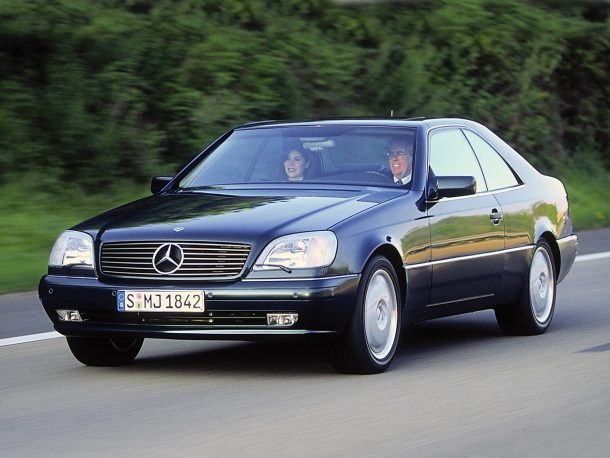 Large, luxurious, and very serious, the first generation CL was also an SEC and S during its life. While Mercedes-Benz played the Nineties naming games with its lineup, the W140 soldiered on in two-door format as a last-of for a top-tier Mercedes coupe.
Large, luxurious, and very serious, the first generation CL was also an SEC and S during its life. While Mercedes-Benz played the Nineties naming games with its lineup, the W140 soldiered on in two-door format as a last-of for a top-tier Mercedes coupe.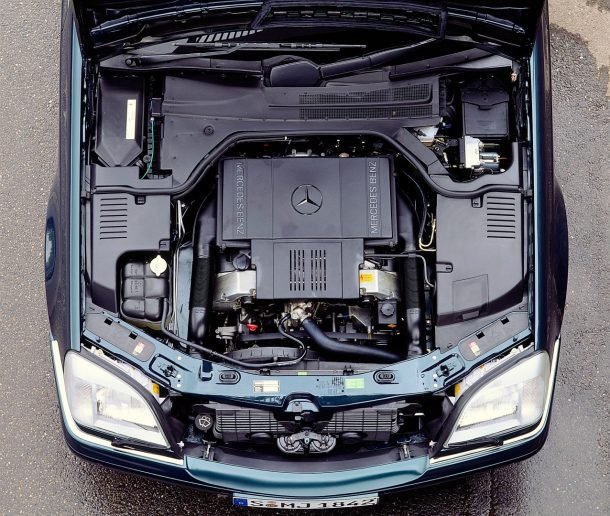 Both versions of the W140 were penned by Bruno Sacco late in 1987, during the middle of his career at Mercedes. Sacco was lead designer at Benz between 1975 and 1999. With the W140, he brilliantly continued the pillarless hardtop styling of the C126. Two models of SEC were initially available: The 500 used a 5.0-liter V8 that produced 320 horsepower, while the top-drawer 600 SEC had a V12. The most expensive car Mercedes produced at the time, it used a 6.0-liter engine that produced 394 horsepower and rocketed the coupe to 60 in 6.1 seconds. The 600 SEC was incredibly exclusive, and fittingly asked $132,000 in 1992. Adjusted for inflation that figure comes to an eye-watering $262,000. V12 models were identifiable almost solely via their V12 badges on the C-pillar and the 600 on the back.
Both versions of the W140 were penned by Bruno Sacco late in 1987, during the middle of his career at Mercedes. Sacco was lead designer at Benz between 1975 and 1999. With the W140, he brilliantly continued the pillarless hardtop styling of the C126. Two models of SEC were initially available: The 500 used a 5.0-liter V8 that produced 320 horsepower, while the top-drawer 600 SEC had a V12. The most expensive car Mercedes produced at the time, it used a 6.0-liter engine that produced 394 horsepower and rocketed the coupe to 60 in 6.1 seconds. The 600 SEC was incredibly exclusive, and fittingly asked $132,000 in 1992. Adjusted for inflation that figure comes to an eye-watering $262,000. V12 models were identifiable almost solely via their V12 badges on the C-pillar and the 600 on the back.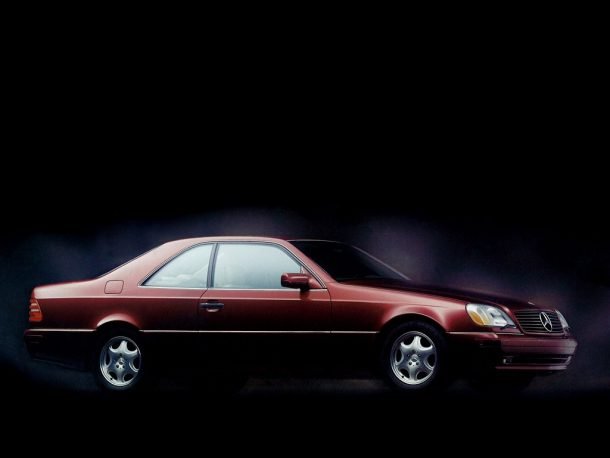 The range expanded into other models over the years, as a less expensive 4.2-liter V8 was an option in some markets. On the other end of the spectrum, AMG models used larger and more powerful V12 engines of 6.0, 6.9, and even 7.3 liters. That largest engine allowed the CL 73 AMG a top speed of 199 miles per hour and was the engine Pagani chose to power the Zonda of the 2000s. Standard Mercedes-issued coupes were all limited by German tradition to 155 mph. A considerable number of horses were required to motivate the CL, since in any trim it weighed at least 4,500 pounds, and weighed about 4,900 pounds with a 12-cylinder lump upfront. All cars used a four- or five-speed automatic dependent on model year.
The range expanded into other models over the years, as a less expensive 4.2-liter V8 was an option in some markets. On the other end of the spectrum, AMG models used larger and more powerful V12 engines of 6.0, 6.9, and even 7.3 liters. That largest engine allowed the CL 73 AMG a top speed of 199 miles per hour and was the engine Pagani chose to power the Zonda of the 2000s. Standard Mercedes-issued coupes were all limited by German tradition to 155 mph. A considerable number of horses were required to motivate the CL, since in any trim it weighed at least 4,500 pounds, and weighed about 4,900 pounds with a 12-cylinder lump upfront. All cars used a four- or five-speed automatic dependent on model year.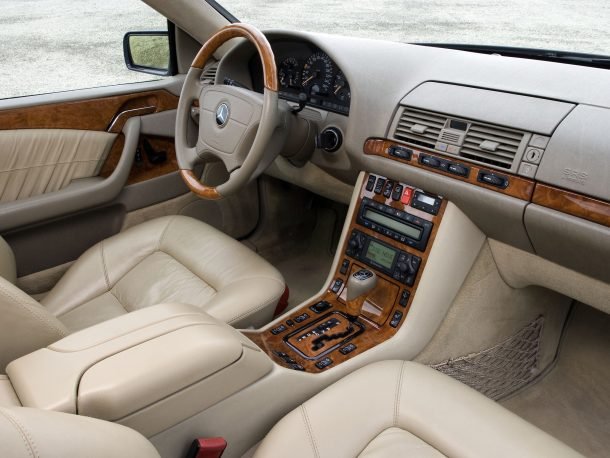 In 1994 the SEC moniker that Mercedes used for decades was replaced by an S, as the S 500 Coupe and S 600 Coupe more closely identified with their sedan sibling. It was a temporary measure though, as for the model year 1997 in Europe and 1998 in North America the S was swapped for CL, and the CL-Class was born. Models were then CL 500, CL 600, and so on. The car underneath changed little over the years, as Mercedes used their best build quality, materials, and technology in their halo coupe.
In 1994 the SEC moniker that Mercedes used for decades was replaced by an S, as the S 500 Coupe and S 600 Coupe more closely identified with their sedan sibling. It was a temporary measure though, as for the model year 1997 in Europe and 1998 in North America the S was swapped for CL, and the CL-Class was born. Models were then CL 500, CL 600, and so on. The car underneath changed little over the years, as Mercedes used their best build quality, materials, and technology in their halo coupe.







